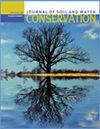入侵的一年生草——气候变化中的重新设想方法
IF 2.6
4区 农林科学
Q2 ECOLOGY
引用次数: 3
摘要
近一个世纪以来,入侵的一年生草对美国西部陆地生态系统的影响越来越大。与气候变化和大气二氧化碳(CO2)增加相关的天气变化使管理入侵的一年生草的挑战变得更加困难。作为气候变化对水土保持影响的特别问题的一部分,美国农业部农业研究服务处的科学家们正在讨论入侵的一年生草的主题,以强调需要在现有知识的基础上进行额外的研究和未来的研究,并考虑到非生物和生物条件的(极端)变化。许多研究都集中在了解年度草入侵的机制,以及评估各种干扰和管理方法的模式和反应。极端天气和不断增加的野火事件加剧了这一问题的复杂性。从广义上讲,包括恢复在内的入侵性年度草地管理必须积极主动地考虑人类价值和生态系统的恢复能力。能够综合大量不同信息的模式对于创建可能导致建立长年系统的轨迹是必要的。整个研究界和土地管理者需要组织和合作,以战略性地开发和实施限制入侵的一年生草的做法。在未来,研究将需要在适应性综合杂草管理(AIWM)框架中解决入侵的一年生草,该框架利用气候变化的模型和解释,导致管理和恢复的改变/新方法。本文章由计算机程序翻译,如有差异,请以英文原文为准。
Invasive annual grasses—Reenvisioning approaches in a changing climate
For nearly a century, invasive annual grasses have increasingly impacted terrestrial ecosystems across the western United States. Weather variability associated with climate change and increased atmospheric carbon dioxide (CO2) are making even more difficult the challenges of managing invasive annual grasses. As part of a special issue on climate change impacts on soil and water conservation, the topic of invasive annual grasses is being addressed by scientists at the USDA Agricultural Research Service to emphasize the need for additional research and future studies that build on current knowledge and account for (extreme) changes in abiotic and biotic conditions. Much research has focused on understanding the mechanisms underlying annual grass invasion, as well as assessing patterns and responses from a wide range of disturbances and management approaches. Weather extremes and the increasing occurrences of wildfire are contributing to the complexity of the problem. In broad terms, invasive annual grass management, including restoration, must be proactive to consider human values and ecosystem resiliency. Models capable of synthesizing vast amounts of diverse information are necessary for creating trajectories that could result in the establishment of perennial systems. Organization and collaboration are needed across the research community and with land managers to strategically develop and implement practices that limit invasive annual grasses. In the future, research will need to address invasive annual grasses in an adaptive integrated weed management (AIWM) framework that utilizes models and accounts for climate change that is resulting in altered/new approaches to management and restoration.
求助全文
通过发布文献求助,成功后即可免费获取论文全文。
去求助
来源期刊
CiteScore
4.10
自引率
2.60%
发文量
0
审稿时长
3.3 months
期刊介绍:
The Journal of Soil and Water Conservation (JSWC) is a multidisciplinary journal of natural resource conservation research, practice, policy, and perspectives. The journal has two sections: the A Section containing various departments and features, and the Research Section containing peer-reviewed research papers.

 求助内容:
求助内容: 应助结果提醒方式:
应助结果提醒方式:


